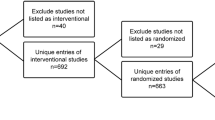Abstract
Pharmacokinetic studies are commonly analyzed using a two-stage approach where the first stage involves estimation of pharmacokinetic parameters for each subject separately and the second stage uses the individual parameter estimates for statistical inference. This two-stage approach is not applicable in sparse sampling situations where only one sample is available per subject. Nonlinear models are often applied to analyze pharmacokinetic data assessed in such serial sampling designs. Modelling approaches are suitable provided that the form of the true model is known, which is rarely the case in early stages of drug development. This paper presents an alternative approach to estimate pharmacokinetic parameters based on non-compartmental and asymptotic theories in the case of serial sampling when a drug is given as an intravenous bolus. The statistical properties of estimators of the pharmacokinetic parameters are investigated and evaluated using Monte Carlo simulations.

Similar content being viewed by others
References
Gibaldi M, Perrier D (1982) Pharmacokinetics, 2nd edn. Marcel Dekker, New York
Cawello W (2003) Parameters for compartment-free pharmacokinetics. Standardisation of study design, data analysis and reporting. Shaker Verlag, Aachen
Davidian M, Giltinan DM (1995) Nonlinear models for repeated measurement data. Chapman and Hall/CRC, Boca Raton
Bonate PL (2006) Pharmacokinetic-pharmacodynamic modeling and simulation. Springer, New York
Bailer AJ (1988) Testing for the equality of area under the curves when using destructive measurement techniques. J Pharmacokinet Biopharm 16(3):303–309 doi:10.1007/BF01062139
Tang-Liu DD-S, Burke PJ (1988) The effect of azone on ocular levobunolol absorption: calculating the area under the curve and its standard error using tissue sampling compartments. Pharm Res 5(4):238–241 doi:10.1023/A:1015997814379
Nedelman JR, Gibiansky E, Lau DTW (1995) Applying Bailer’s method for AUC confidence intervals to sparse sampling. Pharm Research 12(1):124–128 doi:10.1023/A:1016255124336
Piegorsch WW, Bailer AJ (1989) Optimal design allocations for estimating area under curves for studies employing destructive sampling. J Pharmacokinet Biopharm 17(4):493–507 doi:10.1007/BF01061459
Nedelman JR, Gibiansky E (1996) The variance of a better AUC estimator for sparse, destructive sampling in toxicokinetics. J Pharm Sci 85(8):884–886
Gagnon RC, Peterson JJ (1998) Estimation of confidence intervals for area under the curve from destructively obtained pharmacokinetic data. J Pharmacokinet Biopharm 26(1):87–102 doi:10.1023/A:1023228925137
Heinzl H (1996) A note on testing areas under the curve when using destructive measurement techniques. J Pharmacokinet Biopharm 24(6):651–655 doi:10.1007/BF02353485
Bailer AJ, Ruberg SJ (1996) Randomization Tests for Assessing the Equality of Area Under Curves for Studies Using Destructive Sampling. J Appl Toxicol 16(5):391–395 doi:10.1002/(SICI)1099-1263(199609)16:5<391::AID-JAT363>3.0.CO;2-C
Hu C, Moore KHP, Kim YH, Sale ME (2004) Statistical issues in a modeling approach to assessing bioequivalence or PK similarity with presence of sparsely sampled subjects. J Pharmacokinet Pharmacodyn 31(4):321–339 doi:10.1023/B:JOPA.0000042739.44458.e0
Wolfsegger MJ (2007) Establishing bioequivalence in serial sacrifice designs. J Pharmacokinet Pharmacodyn 34(1):103–113 doi:10.1007/s10928-006-9037-x
Jaki T, Wolfsegger MJ, Ploner M (2009) Confidence intervals for ratios of AUCs in the case of serial sampling: a comparison of seven methods. Pharm Stat 8(1):12–24 doi:10.1002/pst.321
Wolfsegger MJ, Jaki T (2005) Estimation of AUC from 0 to infinity in serial sacrifice designs. J Pharmacokinet Pharmacodyn 32(5–6):757–766 doi:10.1007/s10928-005-0044-0
Källén A (2008) Computational pharmacokinetics. Chapman and Hall/CRC, Boca Raton
Resnick SI (1999) A probability path. Birkhäuser, New York
Efron B, Tibshirani RJ (1993) An introduction to the bootstrap. Chapman and Hall, London
R Development Core Team (2009) R: a language and environment for statistical computing. R Foundation for Statistical Computing, Vienna, Austria. ISBN 3-900051-07-0
Jaki T, Wolfsegger MJ (2009) PK: basic non-compartmental pharmacokinetics. R package version 1.01
Rominger KL, Wolf M (1982) A critical view of distribution volumes. In: Bozler G, van Rossum JM (eds) Pharmacokinetics during drug development: data analysis and evaluation techniques. Gustav Fischer Verlag, Stuttgart, pp 45–64
Fieller EC (1954) Some problems in interval estimation. J Royal Stat Soc Ser B 16(2):175–185
Schafer JL (1999) Multiple imputation: a primer. Stat Method Med Res 8(1):3–15 doi:10.1177/096228029900800102
Mahmood I (2005) Interspecies pharmacokinetic scaling. Principles and application of allometric scaling. Pine House Publishers, Rockville
Van der Vaart AW (1998) Asymptotic statistics. Cambridge University Press, Cambridge
Acknowledgments
The authors are grateful to H. Gritsch and P. Turecek for supporting this manuscript.
Author information
Authors and Affiliations
Corresponding author
Appendix
Appendix
Proof of Lemma 1
By the multivariate central limit theorem [e.g., 26, p. 16] the sequence \(\sqrt{n}\left(\user2{T}_{n}-\varvec{\mu}\right)\) converges in distribution to N(0, Σ). Let \(\varphi_{\theta}\left( \user2{T}_{n}\right) :{\mathbb{R}}^{2J}\rightarrow {\mathbb{R}}^{1}\) be defined as \(\varphi_{\theta}\left(\overline{X}_{1},\ldots, \overline{X}_{J},\overline{Y}_{1},\ldots,\overline{Y}_{J}\right) =\hat{\theta}\) with the partial derivatives at \(\varvec{\mu}\) denoted by \(\varphi_{\theta}^{\prime}\) and given in Table 1 and let \(\varphi_{\theta }\left( \varvec{\mu}\right) :{\mathbb{R}}^{2J}\rightarrow {\mathbb{R}}^{1}\) be the corresponding parameter θ.
Because {t j } is strictly monotone increasing and μ j > 0 results in λ > 0, all elements of \(\varphi_{\theta}^{\prime}\) are continuous at \(\varvec{\mu}\) and the sequence \(Z_{n}=\sqrt{n}\left( \varphi _{\theta }\left( \user2{T}_{n}\right)-\varphi_{\theta}\left( \varvec{\mu }\right) \right)\) converges in distribution to \(N\left( 0,\varphi _{\theta }^{\prime }\Sigma \left( \varphi _{\theta }^{\prime }\right) ^{t}\right) \) by the multivariate delta method [e.g., 26, pp. 25–26]. □
Rights and permissions
About this article
Cite this article
Wolfsegger, M.J., Jaki, T. Non-compartmental estimation of pharmacokinetic parameters in serial sampling designs. J Pharmacokinet Pharmacodyn 36, 479–494 (2009). https://doi.org/10.1007/s10928-009-9133-9
Received:
Accepted:
Published:
Issue Date:
DOI: https://doi.org/10.1007/s10928-009-9133-9




